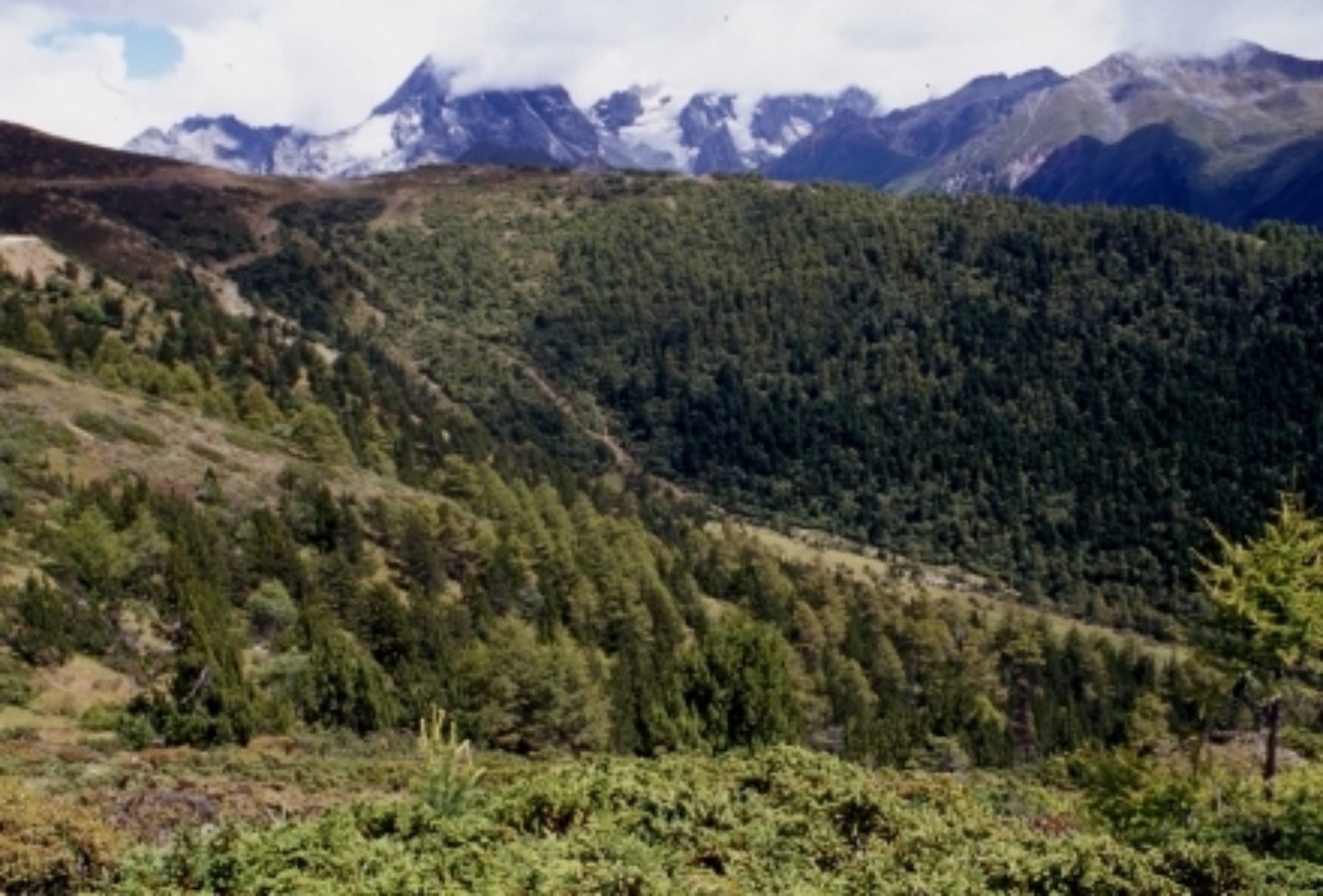Cupressaceae
Juniperus pingii
A variable, high altitude juniper that is usually found as a prostrate shurb (var wilsonii) in SW China and on the Tibetan Plateau. Grazing and firewood collection have led to a suspected reduction of almost 30% so that it has been assessed as Near Threatened.
Description
Taxonomic Notes
The taxonomy of this variable species is controversial; several varieties have been described. The IUCN Redlist recognises four: var. wilsonii (a prostrate shrub and the most common and widespread form), var. pingii (a much rarer tree form), var. miehii (another prostrate form only known from a locality in the upper Zangbo River basin and var. chengii (only known from the type specimen collected in 1937 from near Zhongdian). The last two varieties are very poorly known and have been assesed as Data Deficient. Several other varieties have been described and one, var. carinata has been recognised as a distinct species based on differences in leaf oils and DNA profiles (Adams 2000, 2014)
Human Uses
An important source of firewood at high elevations. Its slow growth, sensitivity to precipitation also make it useful for dendroclimatology (Liang et al. 2012).
References and further reading
- Adams, R.P. 2000. Systematics of one seeded Juniperus of the eastern hemisphere based on leaf essential oils and random amplified polymorphic DNAs (RAPD). Biochemical Systematics and Ecology 28:529-543
- Adams, R. 2014. Junipers of the world; the genus Juniperus. 4th Edition. USA: Trafford. 415 pp.
- Farjon, A. 2010. A Handbook of the World's Conifers. Koninklijke Brill, Leiden.
- Li, S., X. Ye, D. Wang, L. Li, W. Lin, L. Wang 2007. Age structure of Sabina pingii in Yele Natural Reserve of Sichuan Province. J. Sichuan Univ. Nat. Sci. 44(1):186-190.
- Li, N., Carter, G. & Farjon, A. 2013. Juniperus pingii. The IUCN Red List of Threatened Species 2013: e.T34140A2847602. http://dx.doi.org/10.2305/IUCN.UK.2013-1.RLTS.T34140A2847602.en. Downloaded on 08 December 2016.
- Liang, E., X. Lu, P. Ren, X. Li, L. Zhu & D. Eckstein 2012. Annual increments of juniper dwarf shrubs above the tree line on the central Tibetan Plateau: a useful climatic proxy. Annals of Botany 109:721-728.
